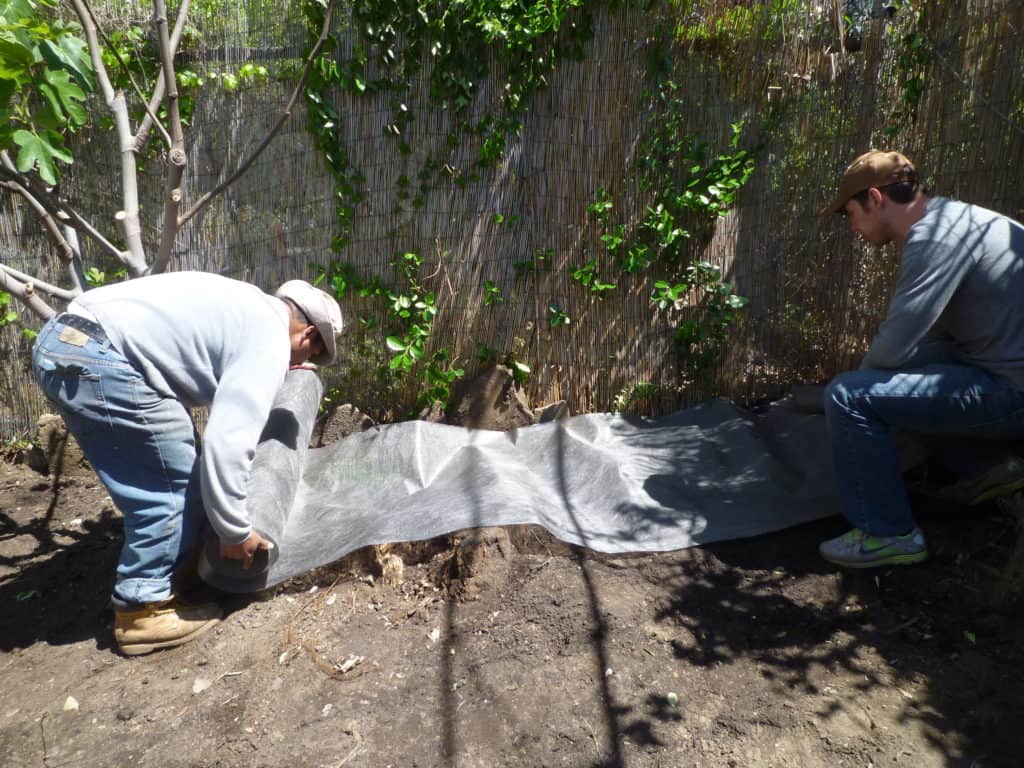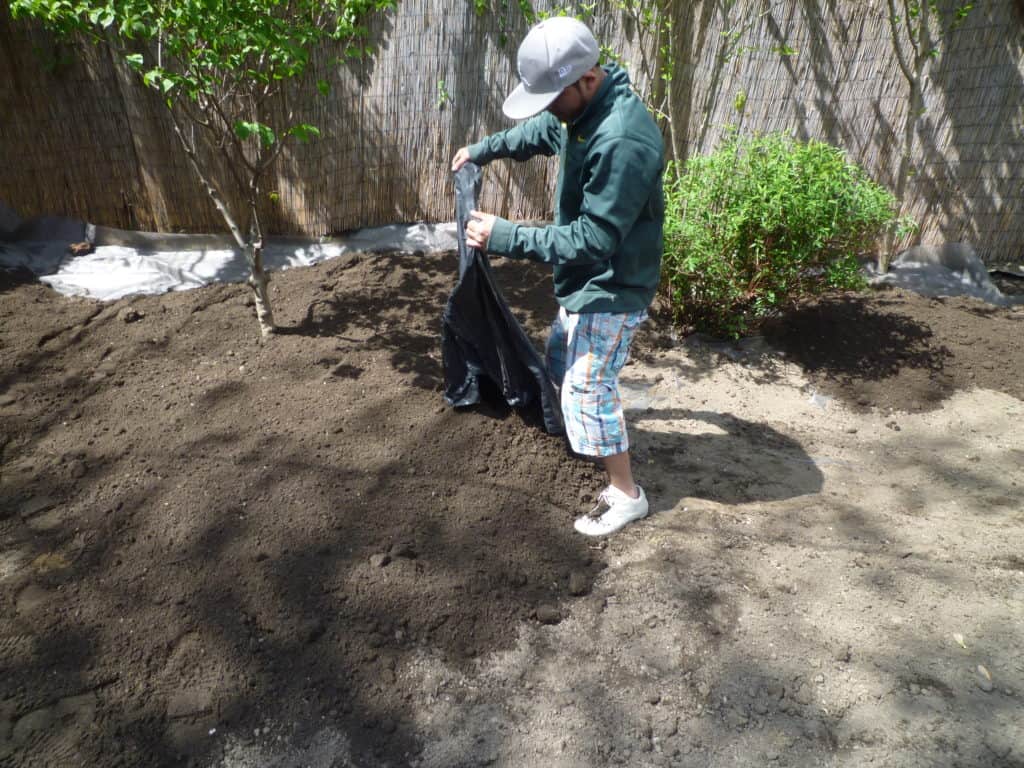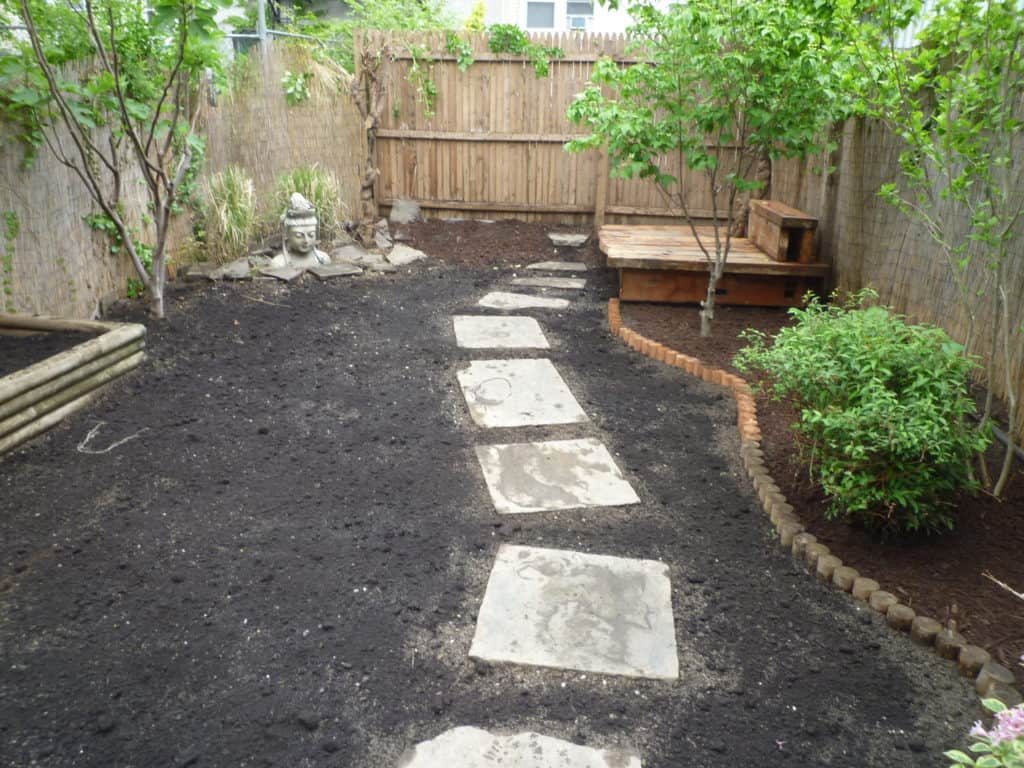Spring gardening is upon us and as a New York soil remediation company we are getting a lot of calls from clients wanting to remove lead contaminated soil from their back yards. We just finished a job last week.
The clients had a beautiful garden in the back yard of their brownstone in Bedford Stuyvesant. Several years of careful work had brought a happy profusion to the space, with native plants nestled close to roses and figs, carefully placed tall grasses creating a tiny ‘secret garden’ area, and a raised bed providing fresh vegetables every summer.
But when their adorable son reached 18 months old, they decided to have the soil tested before letting him play in the garden – and they were very glad they did. The soil was contaminated with 2500 ppm (parts per million) of lead, enough to make it unhealthy for adult contact and very dangerous for a child. To put the number in perspective: uncontaminated soil has about 10ppm of lead; in the Netherlands, 40ppm or more is considered unacceptable; in the US, the EPA advises remediation in children’s play areas at 400ppm!
Lead has found its way into our urban soils mainly from paints and (pre-1980s) automobile emissions, and like other heavy metals it is very persistent and will be there for many years to come. It can poison us either through direct contact with the soil or by eating plants that have grown in it, and it causes damage to the brain and nervous system, behavior problems and slow growth in children, as well as reproductive problems in adults.
Unfortunately, almost all soil in New York City (and other major metropolises like Detroit) are contaminated with heavy metals. A $35 soil test from Brooklyn college will tell you what heavy metals you have and in what quantities, but it’s safe to assume contamination if you’re gardening in the city. Luckily there are several options for remediation, and as an ecological contractor, we can find solutions that work with your situation and budget.
The fastest and most affordable methods involve switching to container or raised bed gardening with fresh soil; the least expensive but slowest option is phytoremediation, where plants that take up heavy metals from the soil are grown and removed several times over 2 to 5 years; and the fastest and most pricey involves removing and replacing the existing soil.
In this case, we worked with the clients to find a custom solution that would quickly have their garden ready for their son to play in. The whole area was covered with a layer of compost to bind with lead and alkalinize the soil (making heavy metals less available to plants):

Then a layer of landscape fabric was laid as a root barrier. This also creates a break between clean and toxic soil in case the client goes digging later.

Six inches of fresh soil were brought in to go on top of this, and extra was added to recreate the raised vegetable bed. Many plants were carefully transplanted and preserved so the garden wouldn’t have to be started completely from scratch.

We then laid the border, the bluestone and built a nice little deck in the back out of old growth salvaged wood. We planted native will grass instead of laying sod. It should be sprouting in the next couple weeks.

Thanks to his parent’s green thumbs and a little bit of help from Eco Brooklyn, our client’s son will grow up with a safe and beautiful garden for play and exploration, but most gardens and back yards in New York have not been tested or remediated, and we can only guess at the long term effects of lead exposure for us and our children. So if you’re gardening (or thinking about it), be sure to get a soil test, and call us for a consultation if you’d like to find out more about remediating your soil.
